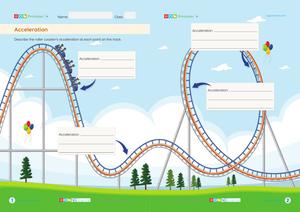Begin the lesson by discussing the importance of understanding speed, direction, and velocity in everyday life. Use real-world examples such as cars on a highway or athletes in a race to capture students' interest.
Go to the LessonLearning Objectives
- Understand the concept of speed as the distance traveled over time and calculate the speed of an object using given data.
- Differentiate between constant speed and average speed, and calculate the average speed of an object using total distance and total time.
- Explain the concept of direction and how it is used alongside speed to describe the velocity of an object.
- Use the velocity of an object, including its speed and direction, to predict its future position and arrival time.
Introduction and Hook
Direct Instruction
Introduce the concept of speed as the distance traveled over time and demonstrate how to calculate it using examples like a cyclist or a car.
Explain the difference between constant speed and average speed, using examples such as a motorcycle race to illustrate these concepts.
Guided Exploration
Watch the video 'Forces in Action on the Football Field – Quiz Edition' to explore how forces affect motion, speed, and direction in a relatable context.
Discuss the concept of direction and how it combines with speed to form velocity, using cardinal directions as examples.
Hands-On Activity
Independent Practice
Check for Understanding
Review and Reflection
Reflect on the lesson by discussing how velocity can be used to predict future positions and arrival times of moving objects.
Assessment and Extension
Conclude with the 'Acceleration' worksheet to deepen understanding of how changes in speed and direction affect motion.
Encourage students to take the quiz to test their comprehension of the unit.
Try the Quiz




